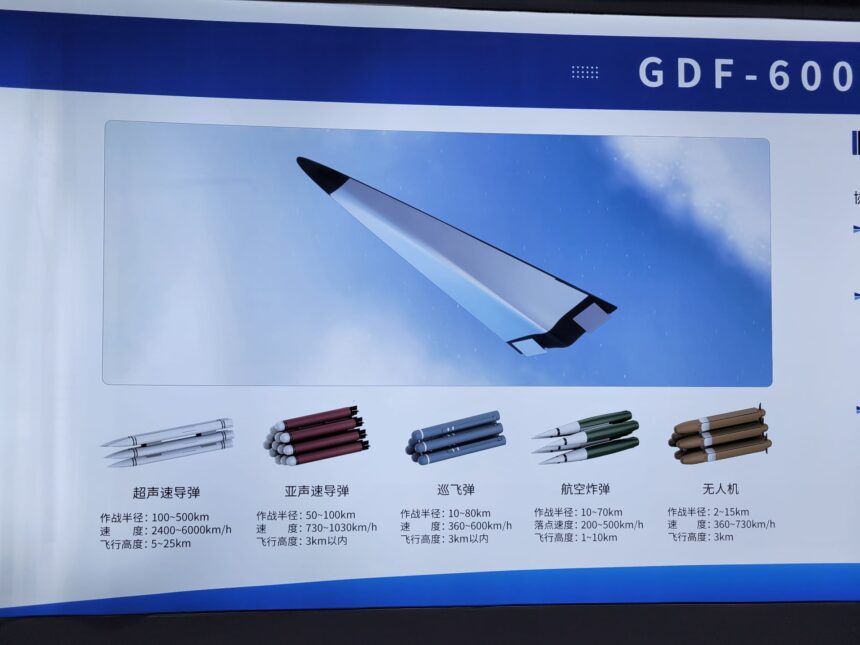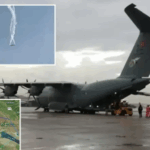Summary by Geopolist | Istanbul Center for Geopolitics:
The GDF-600 hypersonic weapon, which China recently unveiled, is a testament to the nation’s progress in military technology. It has the potential to substantially alter the dynamics of warfare, particularly in relation to Taiwan and US forces in the Pacific. The Guangdong Aerodynamic Research Academy (GARA) emphasized the weapon’s capabilities during the Zhuhai Airshow, which include velocities of up to Mach 7 and ranges of 200 to 600 kilometres. Its design allows for the deployment of a variety of submunitions in mid-flight, including supersonic missiles, drones, and loitering munitions, which increases its adaptability for kinetic strikes, electronic warfare (EW), and reconnaissance tasks.
The GDF-600’s capacity to transport and deploy electronic warfare munitions, including non-nuclear electromagnetic pulse (NNEMP) weapons, is a noteworthy feature. These EW capabilities have the potential to disrupt adversary communications, radar systems, and even critical civilian infrastructure, such as the power grid. As previously mentioned, the accessibility and affordability of NNEMP weapons are the primary factors contributing to their effectiveness, as they enable the disabling of critical infrastructure components and the instigation of extensive outages.
The US military’s ongoing challenges in the development of hypersonic systems, such as the GDF-600, are in stark contrast to China’s ongoing developments. This poses a regional threat, particularly in sensitive regions such as the Taiwan Strait and the South China Sea. The defence strategies of the United States and Taiwan are further complicated by the potential for the use of NNEMP weapons or high-altitude electromagnetic pulse (HEMP) attacks as extensions of cyber warfare or psychological shock tactics.
The gravity of these threats is underscored by the efforts to fortify critical infrastructure, as evidenced by Taiwan’s fortified missile command centres. Nevertheless, defence specialists continue to engage in discussions regarding the constraints of EMP attacks, such as their potential for significant escalation risks and their inconsistent efficacy.
Read more here.







